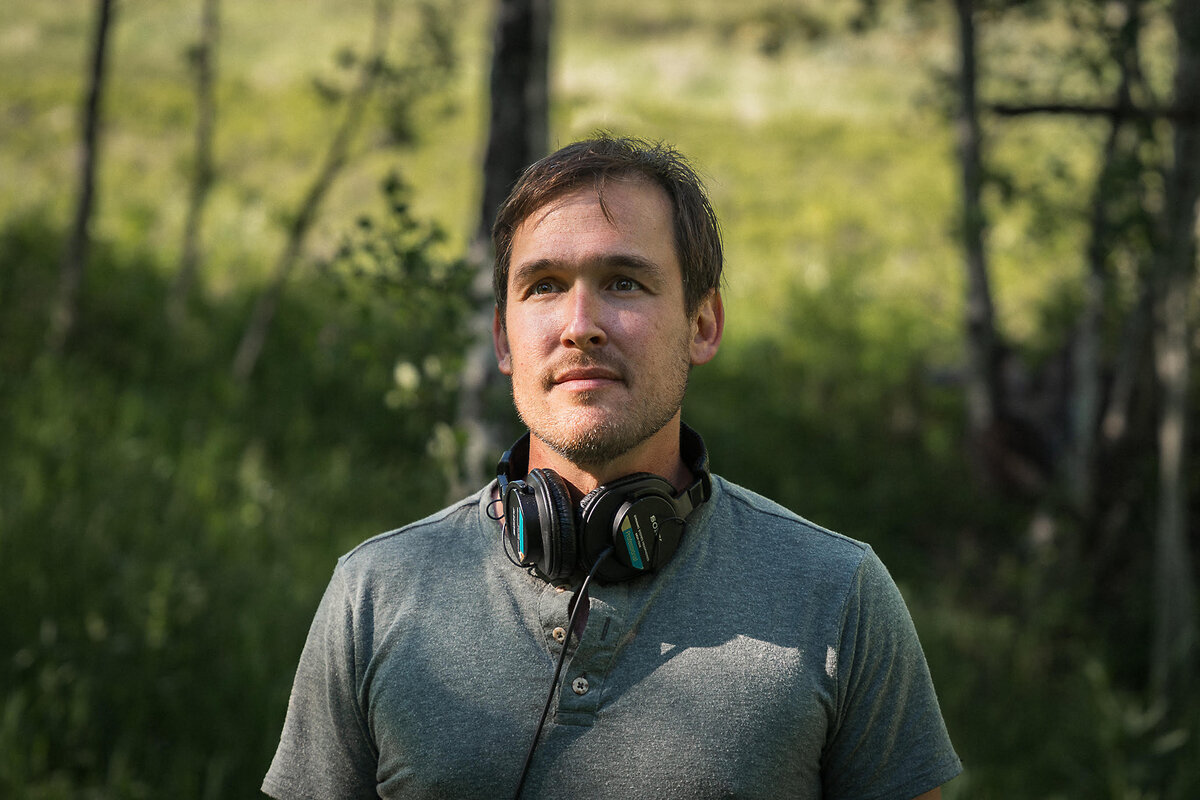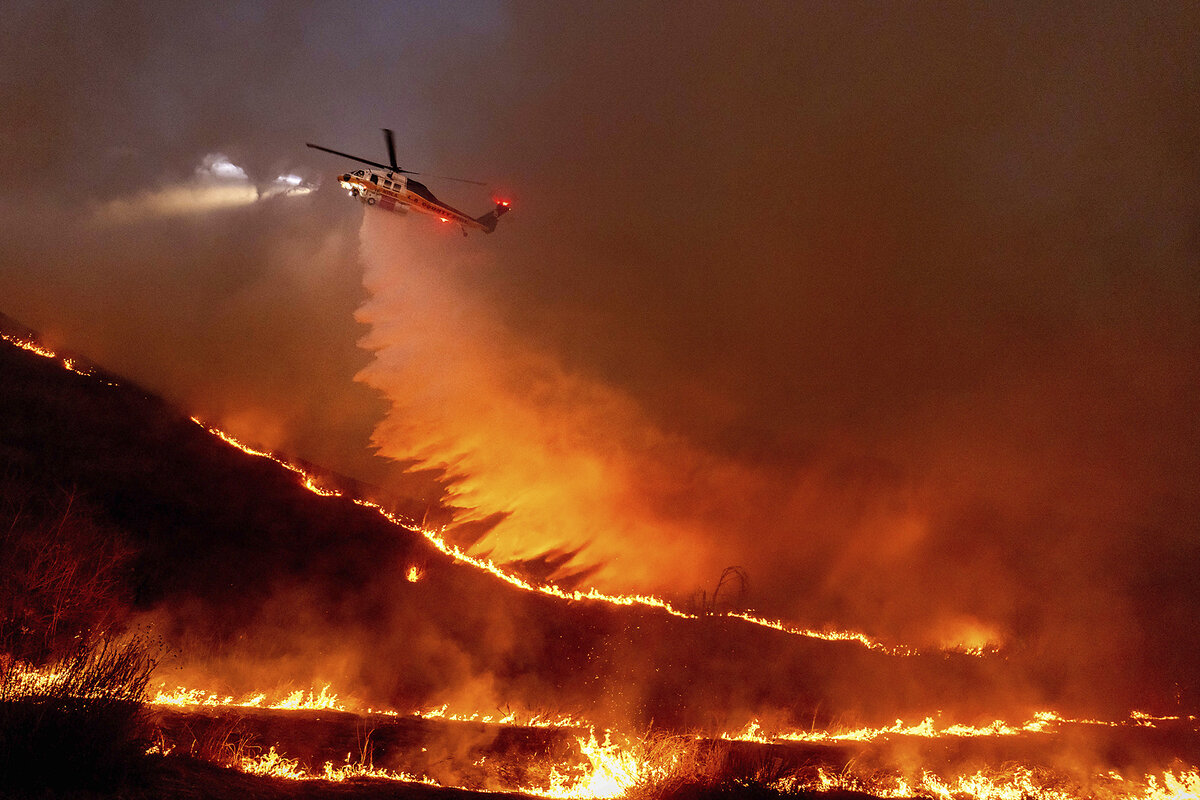Insurance and the LA fires: Is staggering cost threatening the industry?
Loading...
The Los Angeles wildfires have magnified simmering questions about the sustainability of America’s insurance industry in an age of increasingly expensive natural disasters like flood and fire.
The Palisades and Eaton fires killed at least 28 people and destroyed more than 16,000 structures. An analysis by UCLA estimates insured losses at $75 billion.
Nick Mott is a journalist living in Montana whose work focuses on climate and environmental issues. His book, “This Is Wildfire,” examines the history and science behind humanity’s engagement with fire and fire-prone spaces.
Why We Wrote This
Insurance companies could strain to cover billions of dollars in damage from the LA wildfires. We look at why that is, and at potential solutions as more people live in fire-prone places.
Mr. Mott talked with the Monitor about the LA wildfires and the insurance issues they illustrate, as well as some possible solutions – like creating a national insurance plan for climate catastrophes.
This discussion has been edited for clarity and length.
What role does insurance play in an event the size of the LA fires?
Insurance is not built to handle the sort of disaster that wildfires produce. That puts an enormous burden on insurers just to pay out everybody that they owe money to. And in fact, we’ve seen the federal government take over in instances like that in the past.
Wildfires have only really started impacting communities at scale continuously over and over in very recent times. So insurers have not figured out how to deal with the risk here. And that’s in part why we’ve seen so many insurers in California have either pulled out entirely or reduced coverage to some extent, over the last couple of years.
Some companies are pursuing approaches where they can offer maybe less payout, but a faster payout to help people rebuild. But because of the cost of wildfires at such a large scale, this is a problem that’s not just impacting single companies. It’s a problem that’s impacting the entire industry and, of course, huge swaths of the country. But California is on the front lines because there are so many urban people living in areas prone to wildfire. We’re seeing the same thing in Colorado, here in Montana, and all over the West.
I would argue that community planning is a public good and that insurers as private companies are not always operating for the community good. They’re operating for their own shareholders, for profit. It’s not always a bad thing. But that’s why I think the government needs to come in.
I don’t want to prescribe that there is just one way to do it and no other way to do it. So it could be a purely federal program. It could be a public-private partnership. And of course, it would have to be tailored to individual areas.
There could be places – and likely should be places – that we say, “You shouldn’t build here; this is a bad idea. So you cannot build here.” At the same time, you can use pricing to charge people that are building, you know, in areas that are a little less risky but still risky.
Is there a scenario where the insurance companies just say we don’t have the money?
It’s very safe to say it will be logistically burdensome for the sheer amount of people that need their insurance and for the companies to get that insurance money to people. So it is plausible that money will either fail to show in some cases or be delayed. [On Feb. 3, State Farm asked California’s insurance commissioner to approve an emergency rate hike, citing depleted capital after paying out $1 billion so far in claims from the LA fires.]
This is a collective problem that demands collective solutions. So we can talk about flooding, which is climate-linked, fires which are climate-linked, even severe storms which are climate-linked. And we’ve seen insurers pulling out not just in fire-prone areas, but in areas hit by hurricanes on the coasts, and even due to severe thunderstorm damage in Oklahoma.
So by pooling these risks into one bigger system of insurance that is thinking collectively, not just individually, we can make a real difference in terms of how we respond, not just to one sort of catastrophe, but how we respond to climate change as a whole and how we live more resiliently.
What is the relationship between the state and federal funding that’s available for large-scale disasters like these fires, and the insurance payouts?
[In past disasters,] often this would be supplemental with insurance. Often it is not giving homeowners or renters or anybody seeking assistance as much as they deserve and need. And that funding is usually bootstrapped together out of state or federal budgets at the last minute, in an unplanned way. And that can put real stress on the budget of both the state and federal government.
Being prepared for these kinds of events through the sort of national system of insurance I’m discussing can really go a long way in making sure we actually can plan and prepare from a federal or state financial perspective to be ready for these events when they do occur.
Disasters like this make wildfire the enemy. But we also need to recognize that fires have an enormous and beneficial role in many ecosystems across the country, including in the Los Angeles region. And we need to find ways of balancing that ecological role with human safety and property safety.
Why should someone in Montana, for instance, be concerned about an insurance crisis in Los Angeles?
All over the country, all over the West in particular, we’re already seeing rising premiums in part because insurers are scrambling to keep up. But at the same time, I view what’s happening in California and other parts of the West, notably Colorado, as really portending the future for what’s coming for us out here. So much of the western half of the country is arid and prone to frequent and large fires. And at the same time, so many places in the West have either already built a bunch of homes in areas prone to fire or, if you look at the latest statistics, almost all new building is happening in areas that are super fire-prone.
So these catastrophes are not isolated to LA or California, and they’re also not isolated to deep back in the mountains. These can affect urban zones, suburban zones. We can look at the fires outside Boulder and Denver a couple of years back, or even Lahaina.
What gives you hope?
I think about the boom in people thinking about the role of fire on the landscape. Especially in California, I know there’s actually really great community-driven organizations trying to bring fire back to the landscape, along with state initiatives.
Indigenous people are reclaiming the role of fire, both in culture and on the landscapes on which they depend, in ways that are revitalizing land and revitalizing culture at once. There’s so many ways in which fire managers and people thinking proactively about how to deal with the fire problem are learning from tribes. And that gives me a ton of hope.








